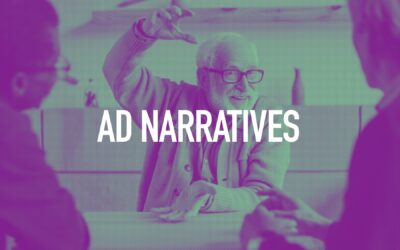Table of Contents
In the rapidly evolving landscape of digital advertising, standing out in a sea of online content demands more than just creativity and innovation; it requires a deep understanding of the human brain. This is where the fascinating world of neuromarketing comes into play, bridging the gap between neuroscience and marketing to create ads that not only capture attention but also linger in the memory of the audience.
Neuromarketing leverages scientific insights into how our brains process information, make decisions, and form memories to design marketing strategies that resonate on a deeper psychological level. By applying these principles, advertisers can craft messages that are more likely to influence consumer behaviour, ultimately leading to more effective and memorable online ads.
The importance of understanding brain responses in the context of advertising cannot be overstated. Every day, consumers are bombarded with thousands of marketing messages across various digital platforms. In such a cluttered environment, the ability to create content that stands out and makes a lasting impression is invaluable. Neuroscience provides a roadmap to achieving this, offering strategies that go beyond traditional marketing techniques to tap into the subconscious drivers of consumer behaviour.
This section sets the stage for a deep dive into the mechanics of the brain’s response to advertising, highlighting the critical role that emotional and cognitive processes play in shaping consumer perceptions and actions. As we explore the application of neuroscience in creating memorable online ads, we’ll uncover the secrets to designing brain-friendly content that not only attracts attention but also fosters a meaningful connection with the audience.
In the following sections, we’ll explore the specific neural mechanisms at play, the principles of neural branding, and practical tips for applying these insights to digital marketing.
Understanding the Brain’s Response to Advertising
The human brain is a complex organ, processing thousands of stimuli each minute with remarkable efficiency. In the realm of advertising, understanding how the brain responds to visual and auditory cues is crucial for crafting campaigns that resonate deeply with consumers. Two key aspects of brain response critical to advertising are visual processing and the role of emotions in decision-making.
Visual stimuli, including images, colours, and movements, are processed by the brain in a way that can significantly influence consumer behaviour. The brain prefers information that is easy to process, known as cognitive fluency, which means simple, high-contrast ads are often more effective than complex ones. Additionally, the brain has a bias towards recognisable patterns and faces, making ads featuring human elements more engaging and relatable.
Emotional triggers in advertising can have a profound impact on memory and decision-making. The amygdala, a part of the brain involved in emotion processing, helps to determine the memorability of an ad. Positive emotions, such as happiness and surprise, can enhance brand recall, while negative emotions, when used appropriately, can create a lasting impression and drive consumer actions. By tapping into emotions, advertisers can bypass the more rational parts of the brain, directly influencing consumer behaviour on a subconscious level.
Designing Brain-Friendly Ads
Creating brain-friendly ads involves understanding the principles of visual perception and cognitive processing. The design of an ad plays a significant role in its effectiveness, with certain elements making it more memorable and engaging. Key factors include the use of colours, shapes, and narratives.
Colours have a profound psychological impact, influencing mood and feelings. Warm colours like red and yellow can evoke excitement and optimism, while cool colours like blue and green are perceived as calming and trustworthy. The shape of elements in an ad can also affect perception; for example, rounded shapes are often seen as more friendly and inviting than sharp, angular ones.
Narratives or stories are particularly powerful in advertising, as they engage multiple brain areas, including those responsible for emotional processing and memory. A compelling narrative can transport the viewer, creating a memorable and emotionally charged experience that strengthens brand recall.
The Power of Emotional Engagement
The most memorable ads are those that evoke a strong emotional response. Emotions play a central role in memory formation and decision-making, making emotional engagement a powerful tool in the advertiser’s arsenal. Strategies for evoking emotions include using relatable scenarios, humour, and surprise, all of which can create a more profound connection with the audience.
Case studies of successful campaigns often highlight the use of emotional storytelling. For instance, ads that tell a heartwarming story or use humour to address a common problem can generate significant engagement and sharing on social media, extending the ad’s reach and impact.
Utilising Visual and Sensory Cues
The human brain is wired to respond to visual and sensory cues, making them critical components of effective online ads. Visual storytelling, through the use of compelling imagery and video, can captivate the audience, making the ad more engaging and memorable. Incorporating movement, such as animations or video, can also draw attention and enhance the storytelling aspect of the ad.
Moreover, creating multisensory experiences by suggesting texture, sound, or even taste through visual cues can significantly enhance the memorability of an ad. While online ads are limited to visual and auditory elements, suggesting other senses can create a more immersive experience, engaging the viewer’s imagination and making the ad more impactful.
Optimising for Attention and Retention
In the digital age, where attention is a scarce commodity, optimising online ads for both immediate attention and long-term retention is essential. The first challenge is capturing attention; the second, and perhaps more significant, is ensuring the ad is memorable enough to influence future consumer behaviour. Here’s how neuroscience can guide the optimisation process:
- Capturing Attention: The human attention span is notoriously short, making it crucial for ads to make an immediate impact. Using contrasting colours, dynamic visuals, and starting with the most compelling message can grab viewers’ attention within seconds. Incorporating elements of surprise or novelty can also stimulate the brain, making viewers more likely to pay attention.
- Maintaining Attention: Once an ad has captured attention, the next step is to keep the viewer engaged. This can be achieved by creating a narrative or using storytelling techniques that evoke curiosity, leading the viewer on a journey and encouraging them to watch the ad through to the end.
- Encouraging Mental Engagement: Ads that prompt viewers to think or feel something deeply are more likely to be remembered. Asking rhetorical questions, presenting puzzles or challenges, or evoking strong emotional responses can increase mental engagement, making the ad more memorable.
- Enhancing Recall: Repetition is a key factor in memory retention, but it’s not just about repeating the ad. Instead, repeating key messages or visual elements within the ad can reinforce memory. Additionally, connecting the ad to existing knowledge or experiences can facilitate the integration of new information into long-term memory, enhancing recall.
Measuring the Impact of Brain-Friendly Ads
The effectiveness of brain-friendly advertising strategies can be measured using a variety of tools and metrics designed to assess neurological engagement and response. Here are some methodologies for evaluating the impact of brain-friendly ads:
- Neuroimaging and Biometrics: Techniques such as fMRI (functional Magnetic Resonance Imaging) and EEG (Electroencephalography) can measure brain activity in response to specific ads, providing insights into emotional engagement and attention levels. Biometric measures, including heart rate, skin conductance, and eye tracking, can also offer valuable data on how viewers interact with ads.
- Brand Recall and Recognition Tests: Assessing the extent to which consumers can recall or recognise an ad after exposure can help determine its memorability. These tests can be conducted through surveys or interviews, asking participants to describe ads they remember seeing over a specific period.
- Conversion Rates and Engagement Metrics: Beyond neurological and cognitive measures, analysing conversion rates and engagement metrics (such as click-through rates, shares, and comments) can provide a more direct indication of an ad’s effectiveness in driving desired consumer actions.
- A/B Testing: Comparing brain-friendly ads with control versions that do not specifically apply neuromarketing principles can help isolate the impact of these strategies. A/B testing allows advertisers to refine their approach based on empirical data, optimising for the most effective elements.
Conclusion
The intersection of neuroscience and digital advertising opens up a fascinating world of opportunities for marketers aiming to create truly memorable and effective online ads.
This exploration into brain-friendly branding has underscored the importance of designing ads that not only capture attention but also engage viewers on an emotional and cognitive level. From optimising visual and sensory cues to leveraging the power of narratives and emotional triggers, the strategies outlined offer a roadmap for creating ads that are not just seen but felt and remembered.
The future of digital advertising lies in a more nuanced and sophisticated approach to understanding consumer behaviour. As technologies and methodologies for measuring brain responses become more accessible, the potential for neuromarketing to inform and enhance advertising strategies will only grow. However, it is crucial to navigate this future with a strong ethical compass, ensuring that the powerful tools at our disposal are used to foster genuine connections rather than manipulate consumer behaviour.
In conclusion, the journey towards creating memorable online ads is ongoing and ever-evolving. By embracing the principles of neuroscience in branding and advertising, marketers can unlock new levels of creativity and effectiveness, ensuring that their message not only reaches their audience but also leaves a lasting impact. As we move forward, the brands that succeed will be those that understand not just the minds of their consumers but their hearts as well.
FAQs
What is the significance of neuroscience in digital advertising?
Neuroscience offers invaluable insights into how consumers process and respond to advertising on a psychological and neurological level, enabling marketers to create more engaging and effective campaigns.
How can emotions influence the effectiveness of online ads?
Emotions play a critical role in decision-making and memory retention. Ads that evoke strong emotional responses are more likely to be remembered and can significantly influence consumer behaviour and brand perception.
What are some key strategies for creating brain-friendly ads?
Strategies include optimising visual and sensory cues, leveraging emotional engagement, utilising storytelling, and ensuring cognitive ease to capture and retain consumer attention.
How can the impact of brain-friendly ads be measured?
The impact can be measured through neuroimaging and biometrics, brand recall and recognition tests, conversion rates and engagement metrics, and A/B testing to compare the effectiveness of different ad elements.
What are the ethical considerations in applying neuroscience to advertising?
Ethical considerations include ensuring transparency, respecting consumer privacy, and avoiding manipulative tactics that exploit psychological vulnerabilities.





